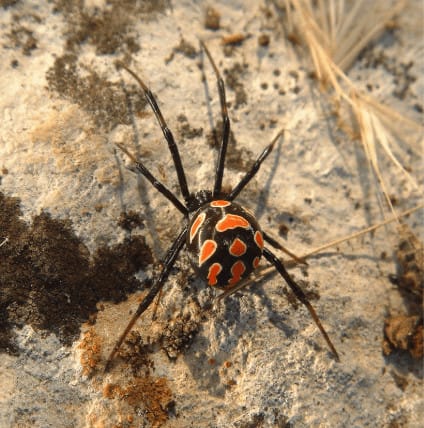
Harmful Effects of Spider Infestation
August 22, 2019Just the thought of an in-home spider infestation is a nightmare for many, but it’s something that can be taken care of and eliminated. While not always physically threatening or dangerous, a spider infestation is often an indicator that other pest populations are present in the home. Spiders like to eat bugs. If your home has populations of roaches, ants, or crickets spiders will be happy to take roost there with an ample supply of food. Consequently, it makes sense to first address the underlying pest problem before tackling the spider issue. Black widows and brown recluse spiders, the most poisonous and dangerous in the US, are the two most significant dangers of spider infestation. A bite from one of these spiders can be deadly.
Signs of Spider Infestation
Spiders are usually found in dark, secluded areas of the home and garden. Here are some tips on finding spiders at home and detecting a spider infestation.
- The sizes and shapes of spider webs vary by spider species. Some spider webs are funnel-shaped, while others are orb-shaped. One of the most distinct spider webs is the web of the black widow. These webs are not geometric, nor even organized into a pattern. Instead, they are woven as random, messy-looking web dens to trap outsmart and trap insects. This is very helpful in detecting whether or not you have black widows in your home.
- Some species of spiders are attracted to moist environments like basements, sheds, walls, and the like.
- There are other species of spiders that live in burrows or crevices instead of webs.
- Where there are insects in your home, there are probably spiders. Spiders prey and feed on flies, insects, ants, woodlice, and even other spiders.
- Some spider species hide out in attics, closets, wall junctions, and storage boxes.
The Dangerous Spiders
Black Widows are easy to spot for two different reasons – their bright red hourglass marking on the base of their bulging black abdomens, and the crazy haphazard webs that they weave. They also like warm, dark spaces and prey on flies and other insects. A small amount of black widow venom can be fatal, so call an exterminator immediately if you suspect there’s an infestation in your home. A black widow bite usually manifests in muscle cramps, weakness, tremors, and localized pain. More severe cases cause vomiting, nausea, and respiratory problems.
Brown Recluse spiders, a cousin of the black widow, are the most dangerous spiders in the United States. Unfortunately, their appearance is not as distinct as the black widow, but rather has a similar shape and color to several other spiders with a brown, violin-shape.
Brown recluse bites are distinct and potentially fatal. The bite is usually painless and symptoms don’t develop until between 2-8 hours after the bite happens. A brown recluse bite creates severe itching and pain, blistering, and vomiting. In a more localized severe reaction, the bite can become discolored and necrotic, creating dead tissue. In very rare cases, the venom can have a secondary effect causing the body’s defenses like platelets and white blood cells to worsen the biter resulting in severe side effects like coma, renal failure, and death.
Rid All Termite & Pest Solutions is a family-owned and operated pest control company established in 1997. We lead the mid-south pest control industry through education, choice and affordability. We are more than happy to come to survey your home get any spider issue under control. We pride ourselves on excellent communication and top-notch service to our clients. Please call us at (901) 377-9915 or visit our website for more information.
Sources:
